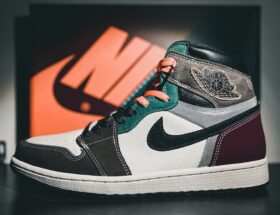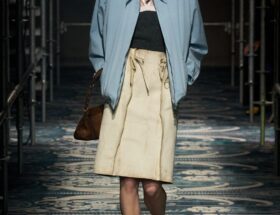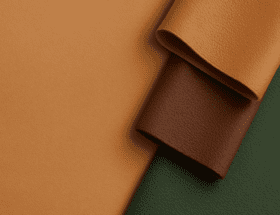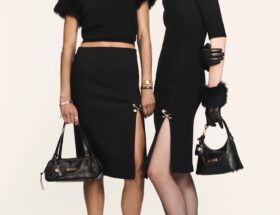In an age where fast fashion dominates and sustainability is more than a buzzword, secondhand clothing platforms like ThredUp are reshaping how we consume apparel. Founded over 15 years ago, ThredUp is now one of the largest online resale companies in the world. In 2024 alone, it processed and resold nearly 17 million garments. But what goes on behind the scenes in this massive operation? And how is AI powering this sustainable fashion revolution?
Here’s a closer look at how ThredUp works—and what happens to clothes that don’t make the cut.
A Digital Thrift Store Powered by People
ThredUp began as a peer-to-peer platform similar to eBay and Poshmark, where users could list and sell their own used clothes. But in 2011, it pivoted to a full-service model: it now handles everything from clothing inspection and listing to shipping and pricing.
Customers receive “clean-out kits”, essentially laundry-sized bags, into which they can pack any unused clothing. These bags are shipped to one of ThredUp’s large-scale distribution centers.
Quality Check: From Closet to Conveyor Belt
Once the clean-out kits arrive, a dedicated team inspects the items. Clothing that is dirty, torn, or heavily worn is removed. ThredUp’s team checks key areas like underarms and seams to ensure only high-quality items are listed.
The accepted garments are then tagged, categorized, and introduced into ThredUp’s intelligent sorting system—with the help of artificial intelligence.
How AI Transforms the Resale Process
AI plays a critical role at nearly every stage of ThredUp’s operations:
- Item Tagging & Categorization: Algorithms detect colors, patterns, and clothing types.
- Measurements: AI tools now automate size measurements, speeding up the listing process.
- Dynamic Pricing: An algorithm assesses demand, brand value, and item quality to generate optimized pricing.
- Photography Automation: Items are rotated through 360° photo booths, generating clean, uniform images for each listing.
The efficiency gained from these systems allows ThredUp’s warehouse to process garments five times faster than before the tech upgrade.
From Virtual Racks to Real Closets
After photography, items are uploaded to the website where they remain for about 1 to 2 months. When a customer makes a purchase, workers retrieve the items from a 100,000-square-foot carousel system, package them, and ship them out.
The original seller receives a portion of the sale—anywhere from a few dollars to several hundred, depending on the item’s brand and condition. Top-selling brands include Lululemon, Madewell, J.Crew, and Ann Taylor Loft.
Luxury items are authenticated by trained experts for brands like Gucci, Hermès, and Givenchy. As of now, ThredUp mainly focuses on women’s and children’s clothing due to lower turnover in men’s wardrobes.
Smart Shopping: AI Tools for Buyers
In 2024, ThredUp launched AI-powered features for a better user experience:
- Style Chat: A virtual stylist that offers outfit suggestions based on user queries.
- AI Image Search: Users can upload photos to find similar styles on the site. This tool increases purchase likelihood by 85%.
These innovations reflect a broader shift: over half of US consumers are expected to use AI for online shopping this year.
What Happens to Unsold Clothing?
Not all clothing is resellable. But ThredUp claims it does not send unsold items directly to landfills. Instead, it works with aftermarket partners like Bank & Vogue, which helps redistribute or repurpose clothing globally.
Only about 25% of donations to thrift stores get sold. The remaining 75% are compressed into bales and shipped to markets in India, Pakistan, Ghana, and other countries. There, workers sort, resell, or recycle garments based on condition and local demand.
For instance, Pakistan sorts 25 metric tons of used clothes daily and Chile receives 130,000 tons annually—though the latter now struggles with illegal dumping in the Atacama Desert.
The Dark Side of Secondhand: Waste and Fire Hazards
Unfortunately, not all secondhand systems are sustainable. Kantamanto Market in Ghana, one of Africa’s largest resale hubs, sees millions of garments each week. Only about 60% are resold—the rest often end up polluting oceans or landfills.
In January 2025, a fire at the market—fueled by flammable synthetic garments—killed two people and affected 10,000 livelihoods.
The Future: Textile-to-Textile Recycling
The ultimate goal is true circular fashion—where old clothes become new again. Innovations like Ambercycle and H&M’s recycling machine are testing chemical processes that separate fabrics like polyester for reuse. However, these systems still require virgin materials and are difficult to scale.
One company in Pakistan, Artistic Fabric Mills, has industrialized cotton recycling into new denim, but this remains the exception, not the norm.
Legislation: Holding Brands Accountable
Governments are starting to act. The US is closing tax loopholes that benefited ultra-fast fashion giants like Shein and Temu. In Europe, France’s extended producer responsibility (EPR) laws have tripled textile recycling rates since 2008.
Meanwhile, California is the only US state with a textile EPR law. Advocates argue that without legislation, brands will continue to prioritize profits over the planet.
As one expert puts it:
“Companies answer to shareholders before they answer to the environment—and that’s wrong.”
Conclusion: A New Era for Fashion
ThredUp shows that resale can be both profitable and sustainable—but it’s only one piece of the puzzle. The real change will come when brands, consumers, and governments work together to reimagine how we make, sell, and reuse clothing.
Until then, platforms like ThredUp—and the AI that powers them—are leading the charge toward a more circular fashion economy.










[…] How ThredUp Uses AI Reduce Fashion Waste […]